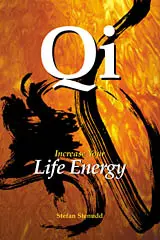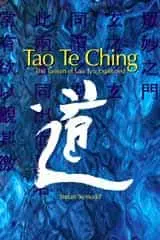|
Qi Energy Exercises
|
Qi Relaxation Exercise 7 Rest heavilyAs stated earlier, it is not easy to relax fully, even when lying down. We do not even relax when we sleep, not completely. Nor is sleep an even and steady state of mind all through the night. There are periods of higher and lower activity for the brain, as well as for the body. No wonder that relaxation is so hard to accomplish.
Sleep is a bit devious. Although it is our primary method of rest, there are many situations when it is not the most successful at it. When you are strained or under pressure, it can be difficult to fall asleep, or to sleep long and deep enough to recuperate. If you have no other method at your disposal, you are caught in a trap that might by time become a vicious spiral. But sleep has no exclusive right to rest – far from it. It has other functions as well, about which we only know parts. Therefore it does not always make the priorities we might wish for. If you want to rest, it is important to focus on this task, even if it means setting sleep aside for a while. To accomplish a really effective rest you need to be awake – wide-awake. In the following exercise it is not exactly qi that has the main role. This is more of a process that can be compared to hypnosis, or in any case self-suggestion. Still, the method is closely related to the qi exercises that follow later on in this book: You have to take control of yourself with the powers of thought, will, and fantasy. Thereby it is an excellent exercise of these powers.
How to do it
 The most important lesson in this exercise is that you relate to both rest and sleep with an active mind. Passively awaiting a restful state of mind and body is usually insufficient. Sometimes you cannot even fall asleep by simply lying in your bed and waiting for it. Then some initiative of yours is needed. You have to actively get involved in this or another exercise, to change your state of mind. When you train your mind for it, rest is much easier – also in stressful situations. Even if you do not fall asleep, the time you spend on this kind of training is advantageous. And that confidence will make you fall asleep more easily.
Qi Relaxation ExercisesHere is a set of simple exercises by which to make your body relax. That's important to release your body enough to increase your qi energy flow. I recommend you to follow the order given below, at least in the beginning, when you familiarize yourself with the exercises and what they do to you. After that, you can choose according to your own needs.
Qi Energy Exercises
Qi Exercise Settings
Qi Energy Breathing
Qi Posture
Qi Relaxation
Qi Extension
Qi Centering
The Book
My Books About Life EnergyHere are the two books I have written on the subject of life energy. This website contains some of the material from the first one. Click the image to see the book at Amazon (paid link).
About CookiesMy Other WebsitesLife EnergyThe many life force beliefs all over the world, ancient and modern, explained.
TaoisticTaoism, the old Chinese philosophy of life, based on Tao, the Way. Also, the complete Tao Te Ching translated and explained.
AikidoAikido, the peaceful martial art. Its basics, principles, techniques, and more — in texts, images and videos.
I Ching OnlineThe 64 hexagrams of the Chinese classic I Ching and what they mean in divination. Free online reading.
Other Books by MeClick the image to see the book at Amazon (paid link).

Stefan StenuddAbout Me I'm a Swedish author and aikido instructor. I've written several books about aikido, qi energy and other life force concepts. I'm also an historian of ideas, researching the thought patterns in creation myths. Click the image to get to my personal website. Contact
|
 Qi — Increase Your Life Energy
Qi — Increase Your Life Energy


